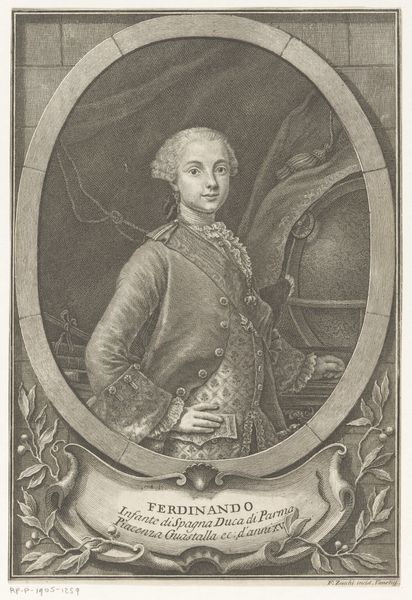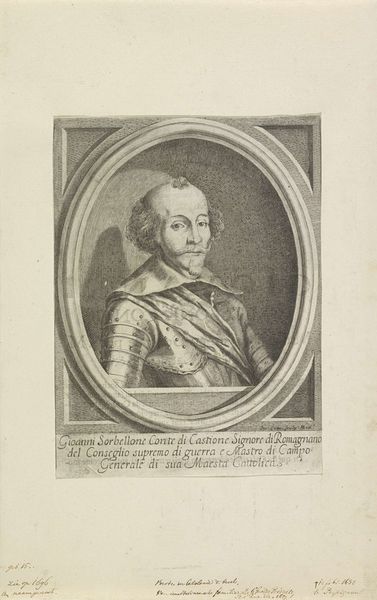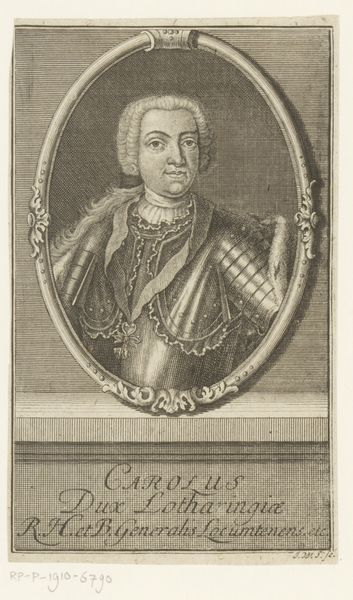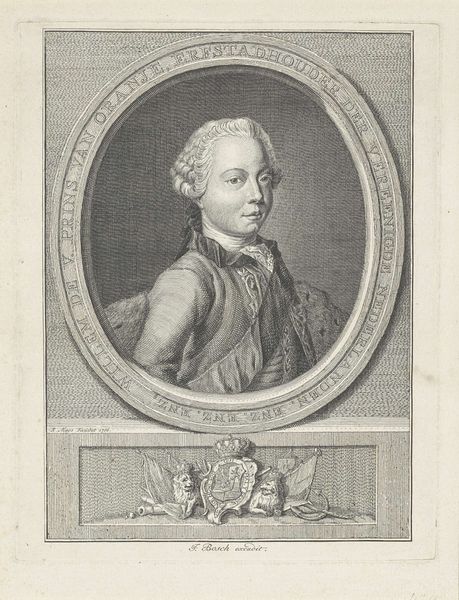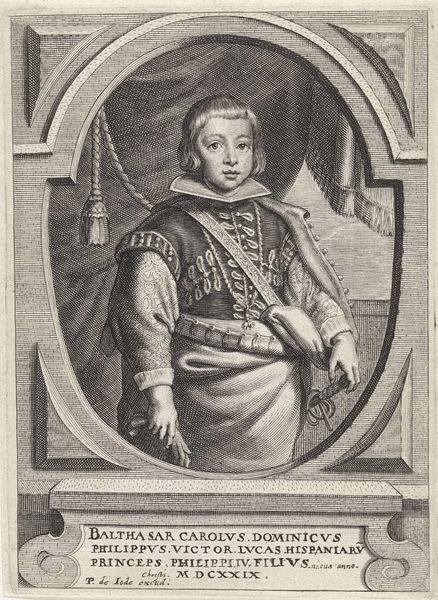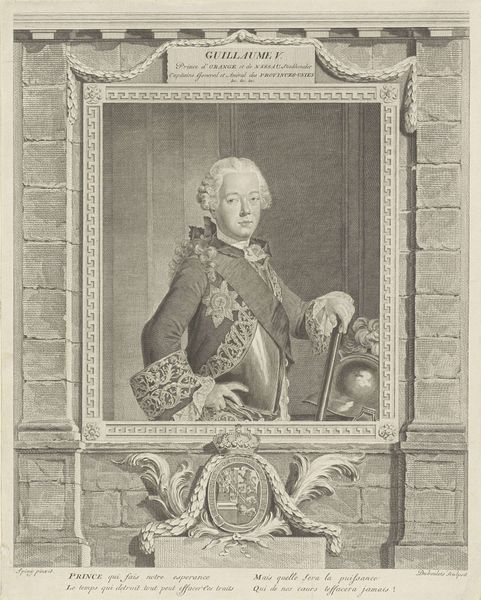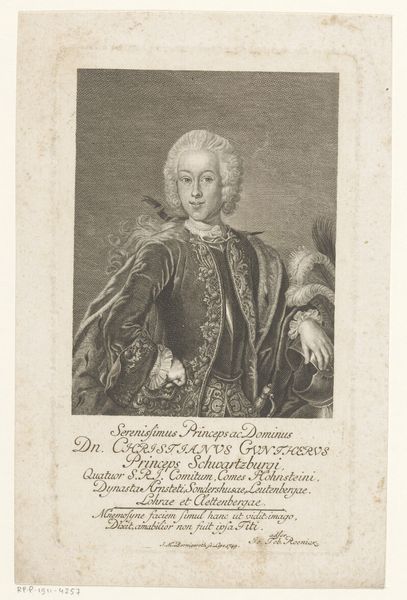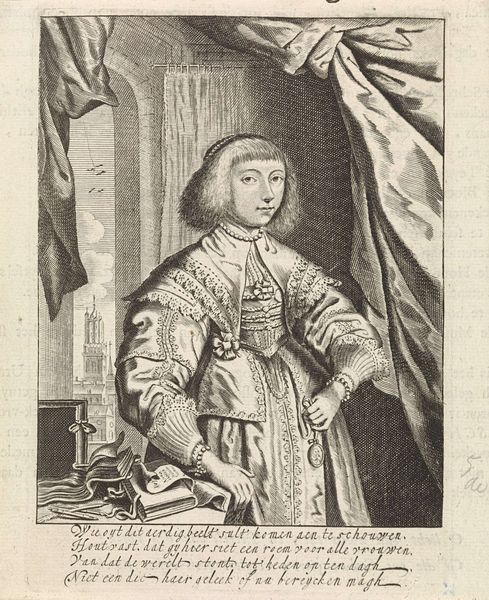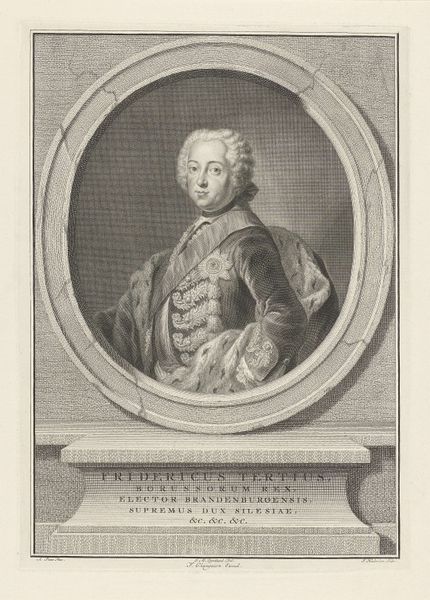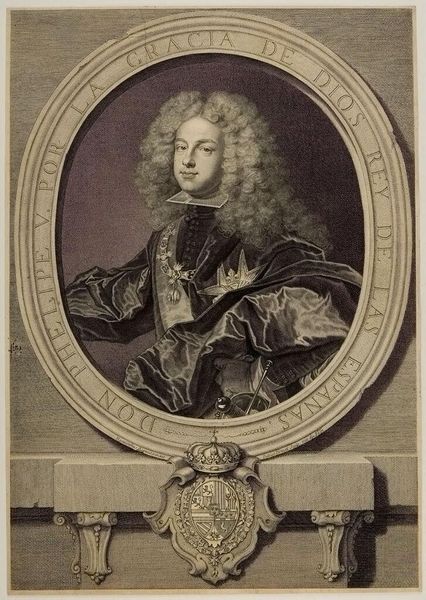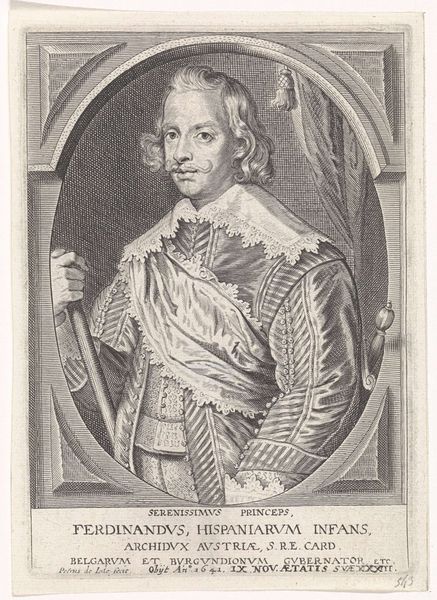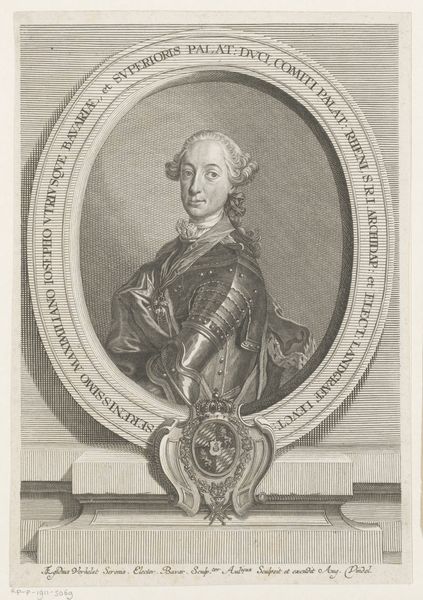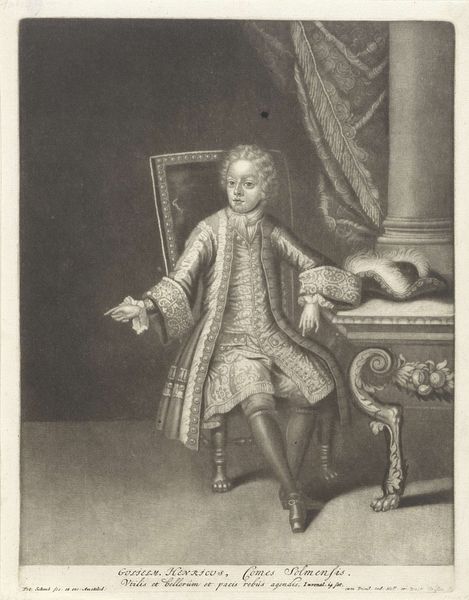
Dimensions: height 235 mm, width 165 mm
Copyright: Rijks Museum: Open Domain
Curator: This engraving, "Portret van Caesari Herculi" by Antonio Gabrieli, made around 1783, depicts a nobleman with incredible detail. What strikes you first about it? Editor: It feels very formal, and the subject's expression is hard to read. There's a certain distance, despite all the rich details in his clothing. How do you interpret this work? Curator: I see a carefully constructed image meant to convey status and authority. The symbols here are crucial. Notice the column and draped curtain? These are classical motifs associated with power and permanence. Even his ornate attire speaks to wealth and lineage. But look closer, does the figure’s pose appear natural or slightly forced? Editor: It does seem a little staged. Almost like he's consciously presenting an image. Curator: Exactly. What cultural memories might Gabrieli be tapping into? The portrait recalls a long history of rulers using imagery to project power. His somewhat affected pose reminds me of theatrical displays common at royal courts; it reinforces the notion that image, appearance, and social standing are all interconnected, carrying heavy cultural and psychological weight. Editor: So, it's less about capturing a true likeness and more about constructing a persona? Curator: Precisely. The "truth" of the portrait lies in the symbolic language it employs, rooted in cultural memory and understood by its intended audience. The engraving’s fine detail only serves to heighten the feeling of wealth and prestige. Editor: I never considered how much "cultural memory" can be embedded in something like this. Thank you! Curator: Indeed. These images, initially designed to portray someone, end up portraying society as a whole.
Comments
No comments
Be the first to comment and join the conversation on the ultimate creative platform.
